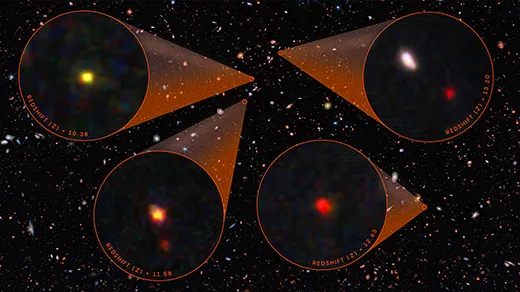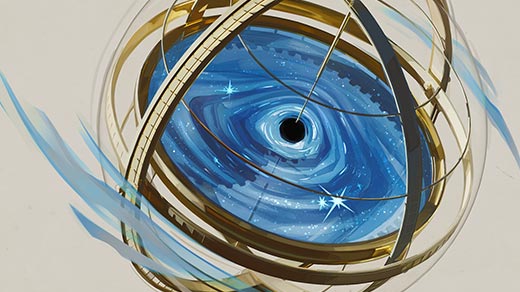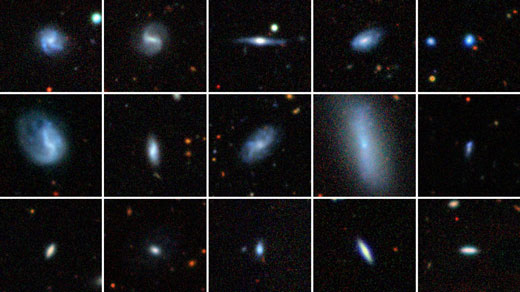What's up in
Galaxies
Latest Articles
Astronomers Dig Up the Stars That Birthed the Milky Way
There once was a cosmic seed that sprouted the Milky Way galaxy. Astronomers have discovered its last surviving remnants.
Shadows in the Big Bang Afterglow Reveal Invisible Cosmic Structures
Cosmologists are using secondary signatures from the cosmic microwave background to map the universe’s hidden matter.
How Will the Universe End?
Big Freeze, Big Rip, Big Crunch, Bounce or vacuum decay? Steven Strogatz speaks with theoretical cosmologist Katie Mack about the five ways that scientists think the universe could come to an end.
Standard Model of Cosmology Survives a Telescope’s Surprising Finds
Reports that the James Webb Space Telescope killed the reigning cosmological model turn out to have been exaggerated. But astronomers still have much to learn from distant galaxies glimpsed by Webb.
Asymmetry Detected in the Distribution of Galaxies
Two new studies suggest that certain tetrahedral arrangements of galaxies outnumber their mirror images, potentially reflecting details of the universe’s birth. But confirmation is needed.
The Enduring Mystery of the Dragonfly 44 Galaxy
A growing catalog of huge but dim galaxies such as Dragonfly 44 is forcing astronomers to invent new theories of galactic evolution.
What Drives Galaxies? The Milky Way’s Black Hole May Be the Key.
Supermassive black holes have come to the fore as engines of galactic evolution, but new observations of the Milky Way and its central hole don’t yet hang together.
Two Weeks In, the Webb Space Telescope Is Reshaping Astronomy
In the days after the mega-telescope started delivering data, astronomers reported new discoveries about galaxies, stars, exoplanets and even Jupiter.
Tiny Galaxies Reveal Secrets of Supermassive Black Holes
Dwarf galaxies weren’t supposed to have big black holes. Their surprise discovery has revealed clues about how the universe’s biggest black holes could have formed.







![Image of a spiral galaxy strewn with ribbons of pink light.]](https://www.quantamagazine.org/wp-content/uploads/2022/07/NGC7496_520x292.jpg)
